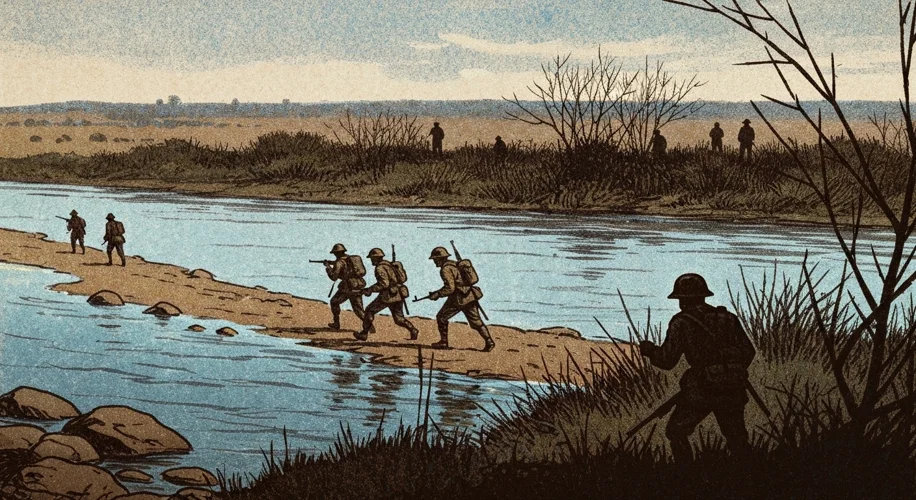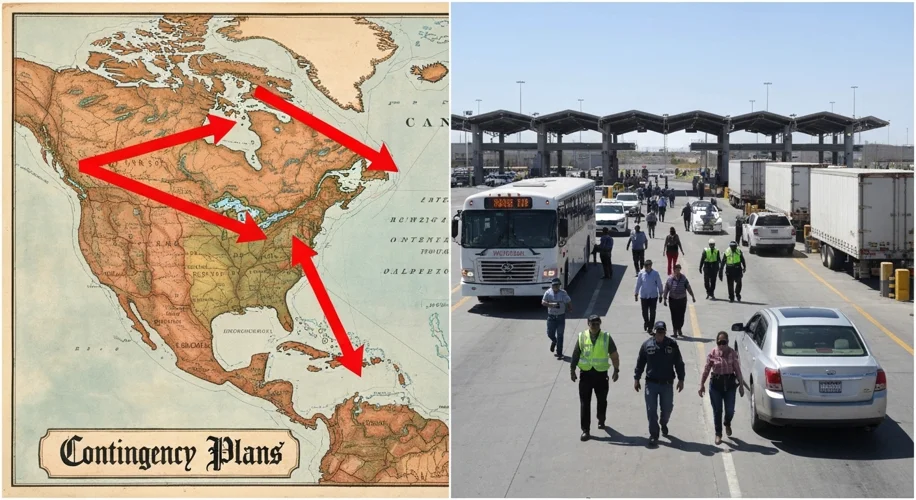The relationship between the United States and Mexico has long been a complex tapestry woven with threads of cooperation, cultural exchange, and, at times, profound tension. While often defined by shared borders and economic ties, a less frequently discussed, yet historically significant, aspect of this relationship involves the United States’ recurring practice of developing military plans and ‘attack plans’ concerning its southern neighbor.
These plans, often born from periods of perceived threat or strategic ambition, reveal a deep-seated undercurrent of interventionist thinking within American foreign policy. Understanding these historical precedents is crucial for grasping the enduring dynamics that shape the bilateral relationship today.
A Legacy of Suspicion: The Early Days
From the mid-19th century onwards, the United States’ westward expansion cast a long shadow over Mexico. The Mexican-American War (1846-1848), a brutal conflict fueled by expansionist desires, resulted in Mexico ceding vast territories to the U.S. This war established a precedent of American military dominance and left a lasting scar on Mexican national consciousness.
Following this war, and throughout the late 19th and early 20th centuries, Mexico experienced significant internal turmoil, including the Mexican Revolution. During these periods of instability, the U.S. military and government frequently engaged in contingency planning. These were not merely defensive postures; they often contemplated direct intervention, border incursions, and even occupation. The motivations were varied: protecting American lives and property, securing economic interests, and projecting American power and influence into a region deemed vital to its national security.

The Veracruz Incident and the Shadow of Intervention
One stark example of this interventionist impulse occurred in 1914 with the U.S. occupation of Veracruz. Citing the ‘Veracruz incident’—the arrest of American sailors by Mexican authorities—President Woodrow Wilson ordered the seizure of the port city. While presented as a punitive measure, the occupation was deeply resented by Mexicans and seen by many as a blatant act of aggression aimed at destabilizing the revolutionary government and influencing the outcome of the Mexican Revolution.
Behind the scenes, elaborate military plans were drawn up. General Frederick Funston, the commander of U.S. forces, advocated for a broader invasion, envisioning a march towards Mexico City. While such a full-scale invasion did not materialize at that time, the existence of these detailed operational plans underscores the willingness of American military leaders to consider direct military action against Mexico.
World War I and the Zimmermann Telegram
Another pivotal moment arrived in 1917 with the interception of the Zimmermann Telegram. This secret diplomatic communication from Germany proposed a military alliance with Mexico, offering to help Mexico reclaim lost territories in Texas, New Mexico, and Arizona if the United States entered World War I against Germany. The U.S. government used this revelation to galvanize public support for entering the war. While the telegram itself did not lead to U.S. military planning against Mexico, it heightened existing suspicions and fears about potential Mexican alignment with America’s adversaries, further fueling the background of contingency planning.
Franklin D. Roosevelt and the Good Neighbor Policy’s Complications
Ironically, even during the era of Franklin D. Roosevelt’s “Good Neighbor Policy,” which aimed to foster better relations and renounce overt intervention, military planning continued. While diplomatic overtures sought to assuage Mexican concerns, strategic assessments within the U.S. military often maintained a watchful eye on Mexico’s stability and its potential geopolitical alignments. This dual approach—public diplomacy combined with private strategic contingency planning—revealed the persistent, underlying security calculus.
Motivations and Implications
The motivations behind these military plans were multifaceted:
- Economic Interests: Protecting American investments and ensuring the stability of trade routes were paramount.
- National Security Perceptions: The U.S. often viewed any instability on its southern border as a direct threat to its own security, sometimes exaggerating the nature of these threats.
- Geopolitical Strategy: During global conflicts, securing Mexico’s neutrality or alignment was seen as strategically advantageous.
- Manifest Destiny Echoes: Remnants of the 19th-century ideology of American expansionism continued to influence strategic thinking, even if not explicitly articulated.
The implications of such planning were significant. For Mexico, it represented a constant reminder of its powerful neighbor’s capacity and willingness to intervene, fostering a deep-seated sense of vulnerability and resentment. For the United States, it reflected a recurring pattern of viewing its relationship with Mexico through a security lens, sometimes overshadowing opportunities for genuine partnership and mutual understanding. It also set a precedent for how the U.S. might approach its southern border and the nations beyond it.
Enduring Echoes
While the overt threat of large-scale U.S. military intervention in Mexico has receded since the mid-20th century, the historical legacy of these plans and actions continues to shape perceptions. Modern challenges, such as border security, drug trafficking, and migration, often trigger discussions that, consciously or unconsciously, echo past anxieties and strategic considerations. Understanding these historical precedents is not about dwelling on past grievances, but about recognizing the deeply ingrained patterns that influence contemporary foreign policy and bilateral relations, reminding us that the “whispers of intervention” have a long and complex history.

